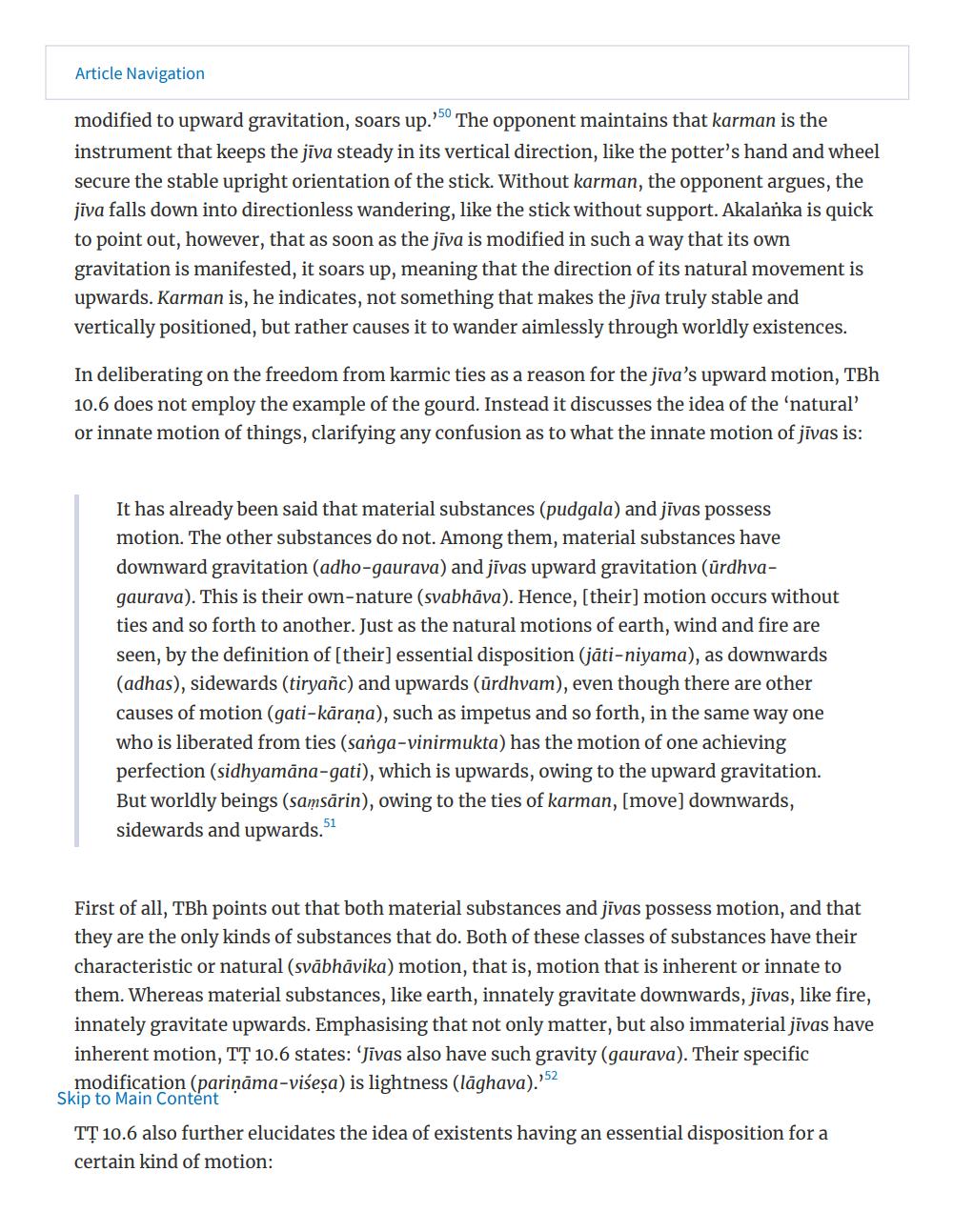Book Title: Jaina Philosophers On Nature Of Liberation Author(s): Publisher: Unknown View full book textPage 9
________________ Article Navigation modified to upward gravitation, soars up."50 The opponent maintains that karman is the instrument that keeps the jīva steady in its vertical direction, like the potter's hand and wheel secure the stable upright orientation of the stick. Without karman, the opponent argues, the jīva falls down into directionless wandering, like the stick without support. Akalanka is quick to point out, however, that as soon as the jiva is modified in such a way that its own gravitation is manifested, it soars up, meaning that the direction of its natural movement is upwards. Karman is, he indicates, not something that makes the jīva truly stable and vertically positioned, but rather causes it to wander aimlessly through worldly existences. In deliberating on the freedom from karmic ties as a reason for the jiva's upward motion, TBh 10.6 does not employ the example of the gourd. Instead it discusses the idea of the 'natural' or innate motion of things, clarifying any confusion as to what the innate motion of jīvas is: It has already been said that material substances (pudgala) and jīvas possess motion. The other substances do not. Among them, material substances have downward gravitation (adho-gaurava) and jīvas upward gravitation (ūrdhvagaurava). This is their own-nature (svabhāva). Hence, (their) motion occurs without ties and so forth to another. Just as the natural motions of earth, wind and fire are seen, by the definition of (their) essential disposition (jāti-niyama), as downwards (adhas), sidewards (tiryañc) and upwards (ūrdhvam), even though there are other causes of motion (gati-kāraņa), such as impetus and so forth, in the same way one who is liberated from ties (sanga-vinirmukta) has the motion of one achieving perfection (sidhyamāna-gati), which is upwards, owing to the upward gravitation. But worldly beings (samsārin), owing to the ties of karman, (move) downwards, sidewards and upwards.51 First of all, TBh points out that both material substances and jīvas possess motion, and that they are the only kinds of substances that do. Both of these classes of substances have their characteristic or natural (svābhāvika) motion, that is, motion that is inherent or innate to them. Whereas material substances, like earth, innately gravitate downwards, jīvas, like fire, innately gravitate upwards. Emphasising that not only matter, but also immaterial jivas have inherent motion, TȚ 10.6 states: 'Jīvas also have such gravity (gaurava). Their specific modification (pariņāma-višesa) is lightness (lāghava). "52 Skip to Main Content TT 10.6 also further elucidates the idea of existents having an essential disposition for a certain kind of motion:Page Navigation
1 ... 7 8 9 10 11 12 13 14 15 16 17 18 19 20 21 22 23 24 25 26 27 28 29
